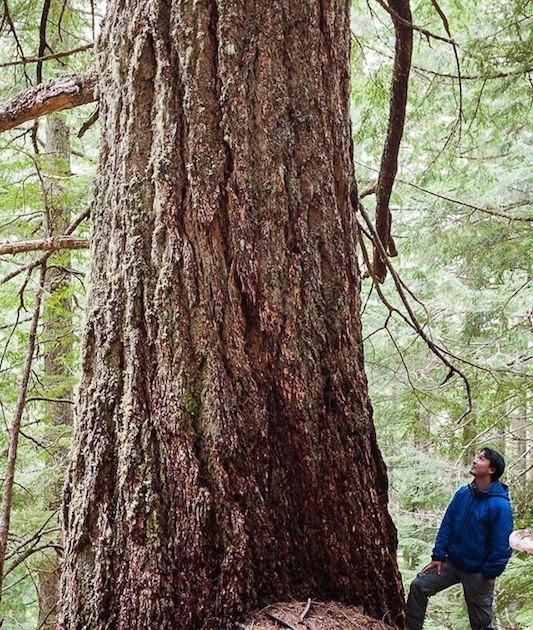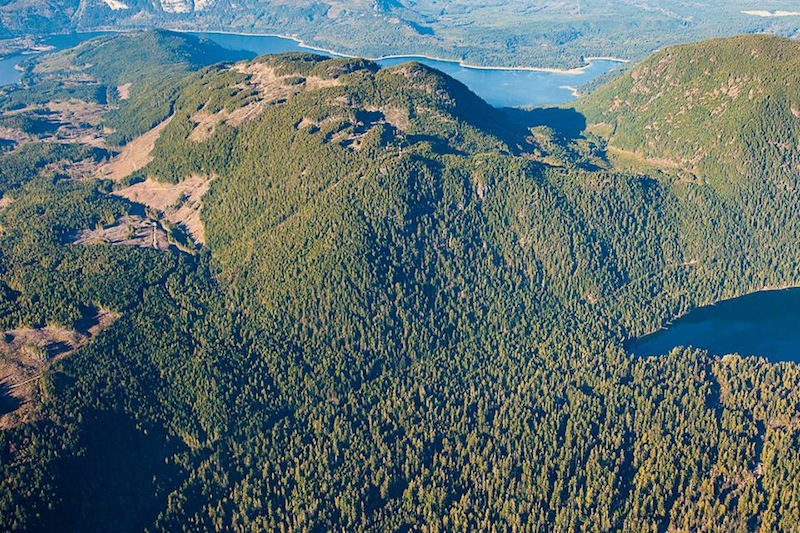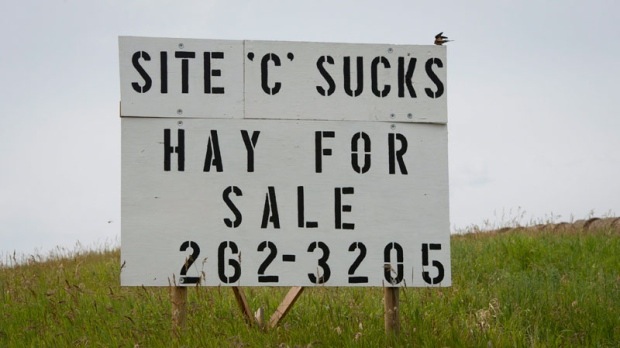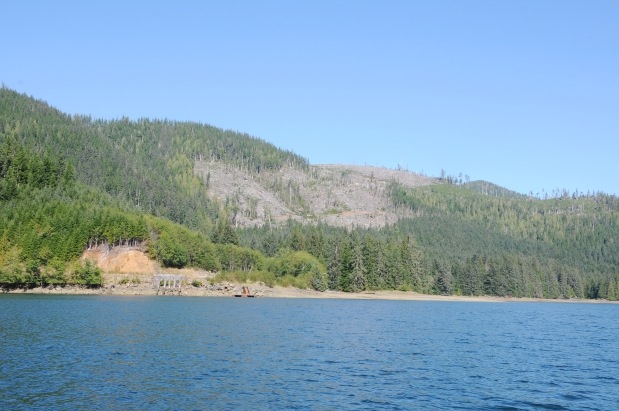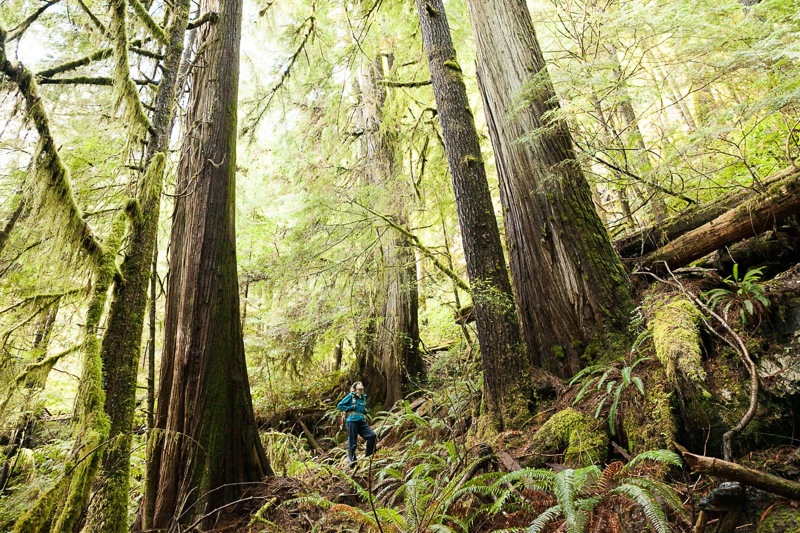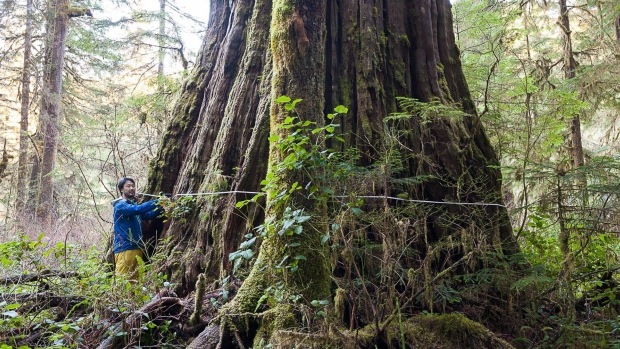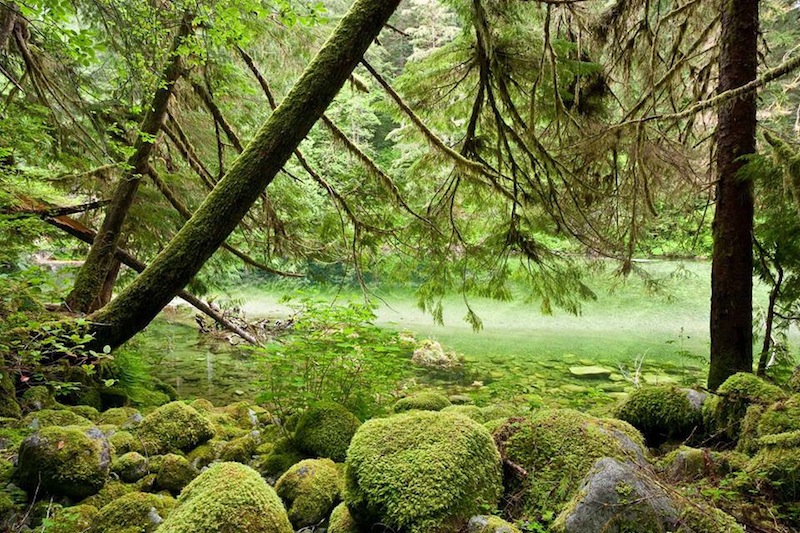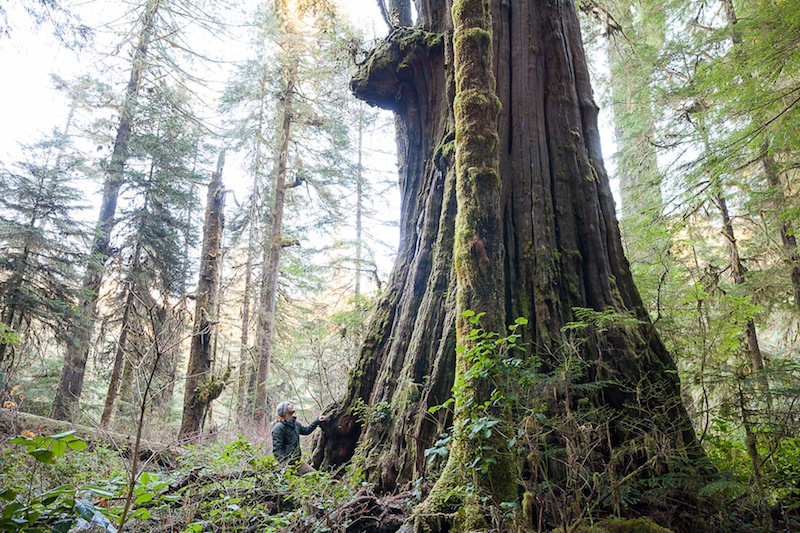Logging company Teal Cedar Products has been granted an extension of an injunction that will keep environmental activists at bay as the company continues to log in the Walbran Valley.
In a decision delivered Monday, the B.C. Supreme Court ordered that until the end of March, the Western Canada Wilderness Committee and other environmental activists must allow the company to carry on its work unimpeded and maintain a 50-metre safety zone from any motor vehicle engaged in active logging.
Teal Cedar Products is part of Surrey-based Teal-Jones Group.
The ruling came as a major blow to the Wilderness Committee, with organizer Torrance Coste saying the result could be permanent damage to the ecosystem.
“If people are discouraged from getting out to Walbran … if no one knows what’s going on, Teal-Jones will run rampant,” he said.
“That’s what we’ve seen in the rest of the [tree farm licence areas] where Teal-Jones is active. Public access to Walbran is critical to keep these last stands of old-growth standing.”
The court’s decision came after a long day of procedural hearings, punctured by muffled shouts from a sometimes vocal and passionate gallery of as many as 65 environmental advocates.
Madam Justice Jennifer Power acknowledged the gallery Monday, noting it drove home the point that Walbran is an area of significant public concern.
However, Power said she was satisfied that Teal-Jones had the right to log the area, and that protesters will now have to keep their distance.
Power also dismissed an application by activist Marlene Simmons for an adjournment of the proceedings.
Power said while she sympathized with Simmons, who represented herself, she was not persuaded to grant the adjournment.
However, Power did include in the order a clause that would allow Simmons or any other activist to have the order set aside with 24 hours’ notice in order to bring the matter back to the courts when they have counsel or additional evidence.
The Wilderness Committee and other activists want to see a ban on cutting of old-growth trees in the Walbran Valley.
Teal-Jones Group gained a permit in September from the province to harvest timber in cutblock No. 4424, a 3.2-hectare area of Crown land in the contentious Central Walbran, for pulp, paper and solid-wood products.
Coste said the cutblock contains 1,000 year-old trees and a densely packed group of old-growth western red cedars dubbed Castle Grove. “It’s a forest unlike any other on the planet,” he said.
According to Teal-Jones’ submissions, the extension of the injunction, which would have expired Monday at midnight, follows three blockades, the last of which saw a man lock himself to a log placed across the road to prevent anyone from going to work.
The injunction will allow legal protests and activities, but stops protesters from interfering with the company’s harvesting operations. Anyone found violating the injunction could be considered in contempt of court.
Activists began blocking Teal Cedar Products Ltd. from road-building work in November.
While the Wilderness Committee and Coste were named by the company in its court application, the activist group says it did not organize the blockades or civil disobedience, but is championing the rights of individuals to stand up for and advocate for the environment.
Teal-Jones’ counsel said it has the legal right to log the area and that the activists’ fight is with the province. And while the company respects the right of activists to protest, it says those blockades have become a safety issue.
Coste maintains the logging company is trying to block access to the Walbran for the law-abiding public. “In a democracy like B.C., we have a right to get out and witness what’s happening in our forests, to witness ecological destruction and to report back on that,” Coste said during a morning protest outside the court. “Teal-Jones is trying to bar that and we’re here to stand up and say the public is deeply concerned about what is happening in the Walbran.”
A lawyer for the Wilderness Committee argued that the 50-metre zone keeping protesters away from the logging equipment is too large and the injunction period is too long. Initially Teal-Jones had asked that it be extended until September.
Coste told a cheering crowd outside the court that the group is standing up for the rights of individuals to protest and defending the province’s forests.
“We are here in court standing up against Teal-Jones today, but a ban on old-growth logging, a legislated solution to this, [has] to come from the province of B.C.,” Coste said. “We need to put pressure on them.”
Teal-Jones may legally be permitted to log the area, but ethically and environmentally it’s wrong, Coste said.
“We don’t have the cathedrals, the castles that other parts of the world have. These are our links back in time and they should be protected as such, as historical monuments,” he told the crowd, arguing the province should ban the logging of old-growth forests this year. “There are no replacements for these forests. A 1,000-year-old forest takes 1,000 years to grow.”
Read more: https://www.vancouversun.com/business/resources/walbran+valley+logging+buffer+zone+injunction/11631656/story.html?__lsa=e20a-c7f0

